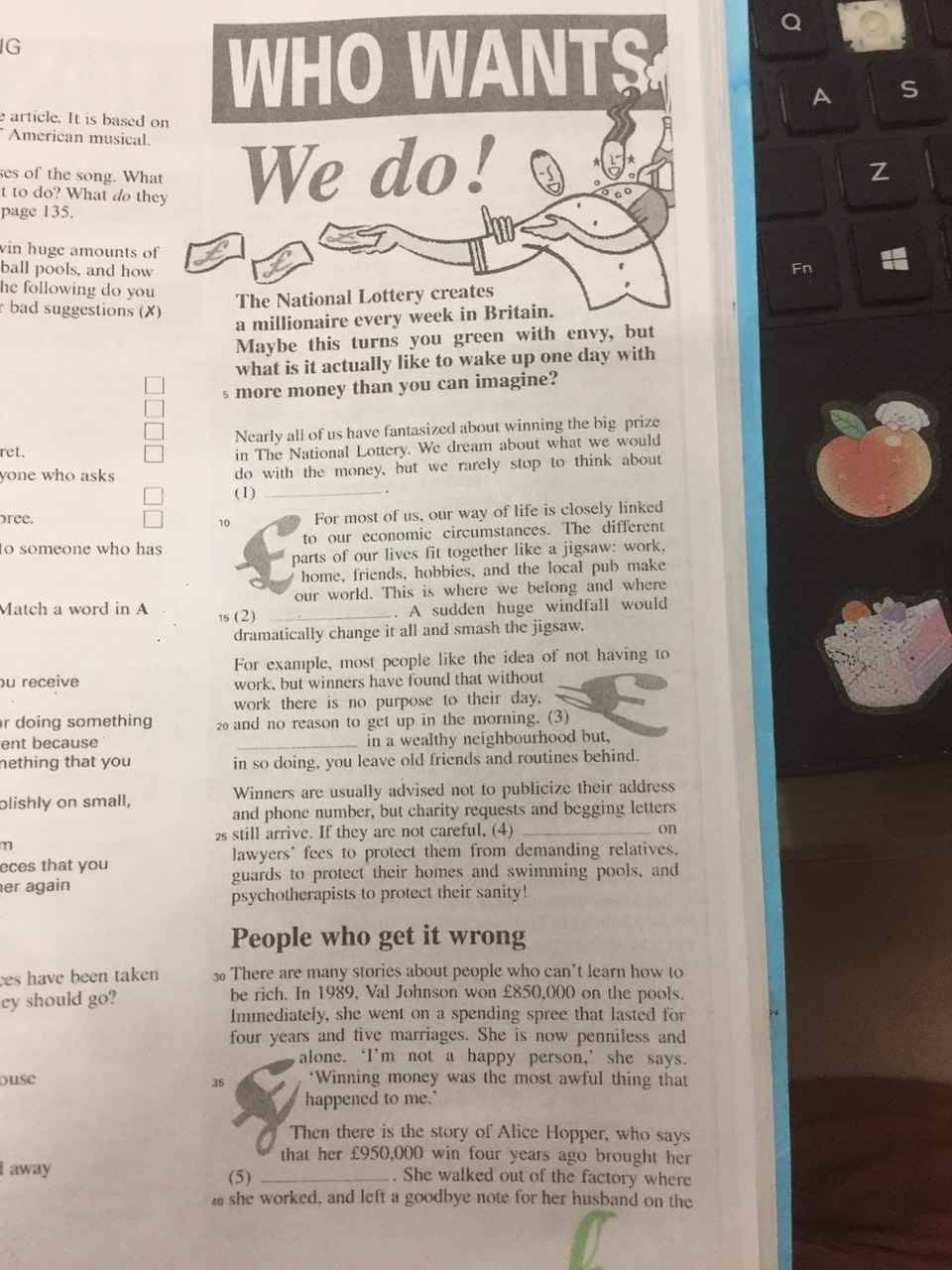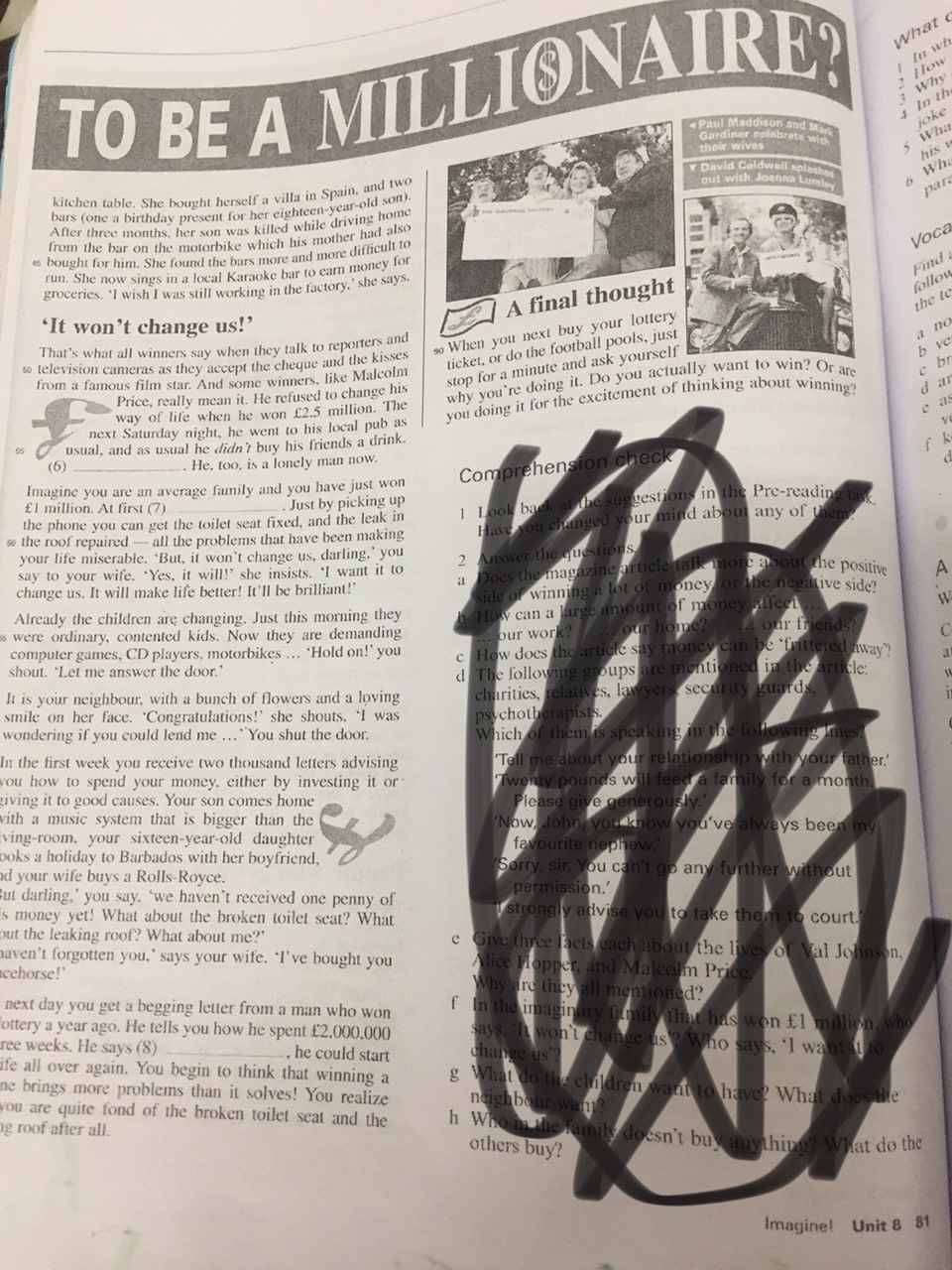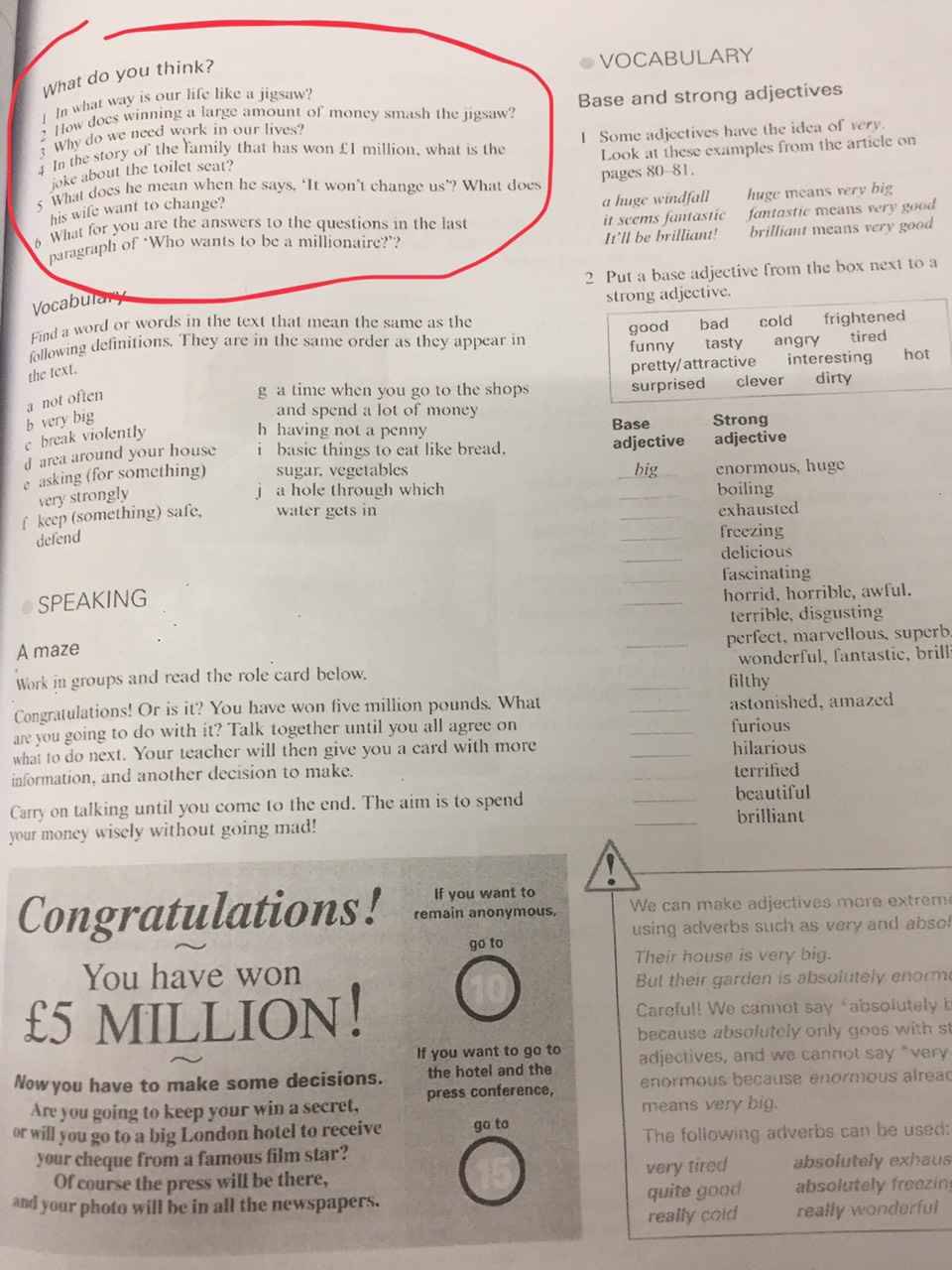Luyện tập tổng hợp
Các câu hỏi tương tự
VII. Đọc đoạn văn sau và chọn câu trả lời đúng cho các câu hỏi. (0,8 điểm)Ha Long Bay is a UNESCO World Heritage site in Quang Ninh Province, in the northeast of Viet Nam. It has got over 1,600 islands and islets. Among many ancient fishing villages in Ha Long Bay, only Cua Van floating village remains. All the house anh building in the village float on huge wooden raft. The villagers spend their days fishing and looking after the sea life. Then they sail to the mainland to trade the...
Đọc tiếp
VII. Đọc đoạn văn sau và chọn câu trả lời đúng cho các câu hỏi. (0,8 điểm)
Ha Long Bay is a UNESCO World Heritage site in Quang Ninh Province, in the northeast of Viet Nam. It has got over 1,600 islands and islets. Among many ancient fishing villages in Ha Long Bay, only Cua Van floating village remains. All the house anh building in the village float on huge wooden raft.
The villagers spend their days fishing and looking after the sea life. Then they sail to the mainland to trade their fish for things like food, drinking water or clothes. Most children go to floating school and then spend the rest of their time learning important skills like swimming and fishing. They also help out their parents as much as they can.
Their lifestyle may seem strange to many people, but it’s so wonderful to live among such natural beauty and know you are protecting it. The villagers are able to help preserve their beautiful bay because they live directly on the water.
1. Where is Ha Long Bay located?
_____________________________________________
2. How is Cua Van village?
____________________________________________
3. What do people in Cua Van village do to get food, drinking water or clothes?
____________________________________________
4. The word “they” in paragraph 2 is closest meaning to _____.
A. the builder B. the schools C. the villagers D. the house
5.According to the passage, the villagers’ lifestyle may seem _____ to many people.
A. ordinary B. peculiar C. dangerous D. special
6. The word “preserve” in paragraph 3 is closest in meaning to _____.
A. damage B. destroy C. conserve D. construct
Câu VI. Đọc đoạn văn sau và trả lời các câu hỏi. (0,8 điểm)A magnitude-9.0 earthquake, also known as the Great East Japan Earthquake, struck in the Pacific Ocean off the northeast coast of Japans Honshu island on March 11, 2011. It was the most powerful earthquake ever to hit Japan and the fourth largest ever recorded in the world. The earthquake triggered a massive tsunami that flooded more than 200 square miles of Coastal land. Waves estimated to be as high as 38 meters, the height of a 12-sto...
Đọc tiếp
Câu VI. Đọc đoạn văn sau và trả lời các câu hỏi. (0,8 điểm)
A magnitude-9.0 earthquake, also known as the Great East Japan Earthquake, struck in the Pacific Ocean off the northeast coast of Japan's Honshu island on March 11, 2011. It was the most powerful earthquake ever to hit Japan and the fourth largest ever recorded in the world. The earthquake triggered a massive tsunami that flooded more than 200 square miles of Coastal land. Waves estimated to be as high as 38 meters, the height of a 12-story building, tore apart Coastal towns and villages, carrying ships inland as thousands of homes were flattened, then washed tons of debris and vehicles back out to sea. Damage to the reactors at TEPCO's Fukushima Daiichi Nuclear Power Plant then caused a third disaster, contaminating a wide area that still forces nearly 100,000 residents to live as evacuees. Tsunami waves also swept across the Pacific, causing damage or disruptions in Hawaii, California, Oregon, Washington and British Columbia.
Casualties from the earthquake and tsunami in Japan may be 30,000 and close to 500,000 people were forced to evacuate. More than 125,000 buildings have been washed away or seriously damaged; property damage is estimated to be more than $310 billion.
1. Where did the earthquake strike?
2. What caused the tsunami?
3. How many people were evacuated?
4. Were there four or five regions affected by the tsunami?
 Đọc đoạn văn và trả lời 5 cau hỏi
Đọc đoạn văn và trả lời 5 cau hỏi
Câu VII. Đọc đoạn văn sau và chọn câu trả lời đúng cho các câu hỏi (0),điểm)The dustbin is full to the top with colored plastic. In fact, it is so full that it is difficult to put the lid on. But the Strauss family who own this dirty, old dustbin, are very proud of it. Why? Because i contains the familys rubbish for a whole year!Two years ago, this family read an article about plastic bags and how they cause pollution and harm sea creatures. They decided to stop using plastic bags completely. No...
Đọc tiếp
Câu VII. Đọc đoạn văn sau và chọn câu trả lời đúng cho các câu hỏi (0),
điểm)
The dustbin is full to the top with colored plastic. In fact, it is so full that it is difficult to put the lid on. But the Strauss family who own this dirty, old dustbin, are very proud of it. Why? Because i contains the family's rubbish for a whole year!
Two years ago, this family read an article about plastic bags and how they cause pollution and harm sea creatures. They decided to stop using plastic bags completely. Now, when they buy food they reuse their own bags each time. They recycle as much as they can - glass bottles, plastic bottles paper, cardboard, cans- and they simply do not buy things if they cannot recycle the packaging.
The family are keeping a record of their lifestyle on their website. They hope that other people will read it and reduce their waste. If everyone recycled a bit more, it would make the environmen better. (Adapted from Solutions by Falla and Davies)
1. What is the passage mainly about?
A.. A lifestyle that is harmful to the environment
B. A lifestyle that is good for the environment
D. An old dustbin full of rubbish
C. An article about pollution
2. The word "contains" in paragraph 1 is closest in meaning to
A. throws
B. gives
C. uses
D. keeps
3. According to paragraph 2, which of the following is NOT mentioned as the thing the Strauss family recycle?
A. food
B. bottles
4. The word "it" in paragraph 3 refers to
A. environment
B. family
C. paper
C. waste
D. cans
D. record
giúp với ạ Đọc đoạn văn ở bai IX và trả lời câu hỏi
Đọc đoạn văn ở bai IX và trả lời câu hỏi
Mọi người xem giúp em, xem em trả lời đc mấy câu đúng ạ,đc bao nhiêu điểm ạ,ko tính bài viết lại câu và bài văn(2d)



ai cs bài đọc trả lời câu hỏi thường gặp cho mình xin vs ạ
1. Đọc đoạn văn và chia động từ trong ngoặc cho phù hợpHarold Black’s a famous pianist. He (1).....................(give) two or three concerts every week. He (2).....................(travel) a lot and this week he’s in New York. He (3).....................(stay) at an expensive hotel. He’s at his hotel now. He (4).....................(have) his breakfast in the dining room. He (5).....................(drink) a cup of coffee and he (6).....................(read) a newspaper...
Đọc tiếp
1. Đọc đoạn văn và chia động từ trong ngoặc cho phù hợp
Harold Black’s a famous pianist. He (1).....................(give) two or three concerts every week. He (2).....................(travel) a lot and this week he’s in New York. He (3).....................(stay) at an expensive hotel. He’s at his hotel now. He (4).....................(have) his breakfast in the dining room. He (5).....................(drink) a cup of coffee and he (6).....................(read) a newspaper. Harold’s always very busy. He (7).....................(play) the piano regularly. He (8).....................(practice) for four hours everyday, He (9).....................(go) to bed late and he always (10).....................(get up) early. But he sometimes (11).....................(get) dressed too quickly and this morning he (12).....................(wear) one blue sock and one red one!
mọi người trả lời và giải thích giúp mình với, nhân tiện thì kiến thức của câu dưới thuộc phần nào thế ạ? cảm ơn mn !
______ i bought the golden fish.
A. it was from this shop which
B. it was from this shop that
C. it was this shop was
D. it was from this shop












